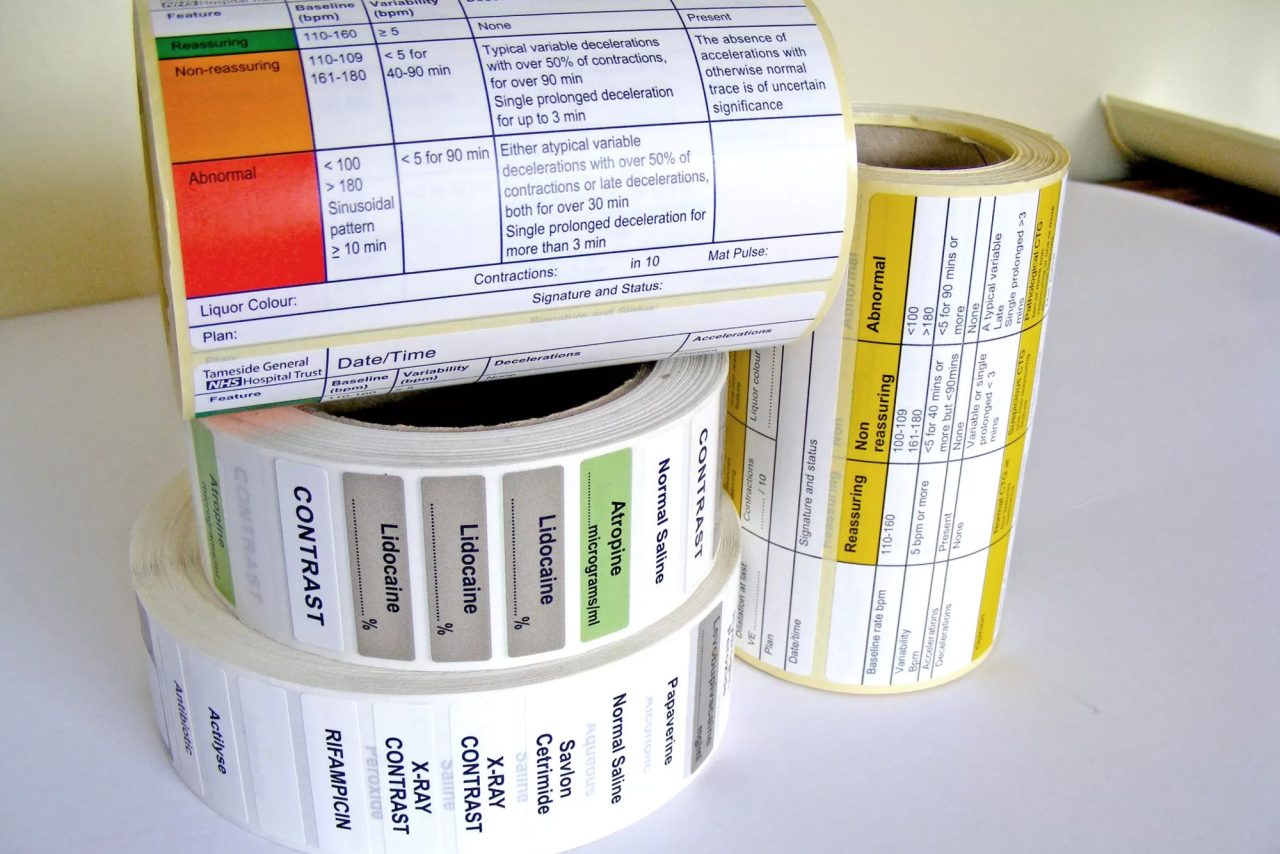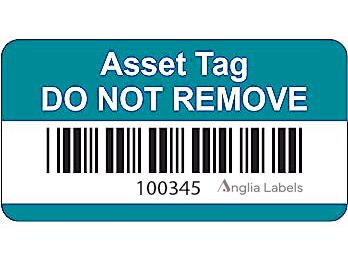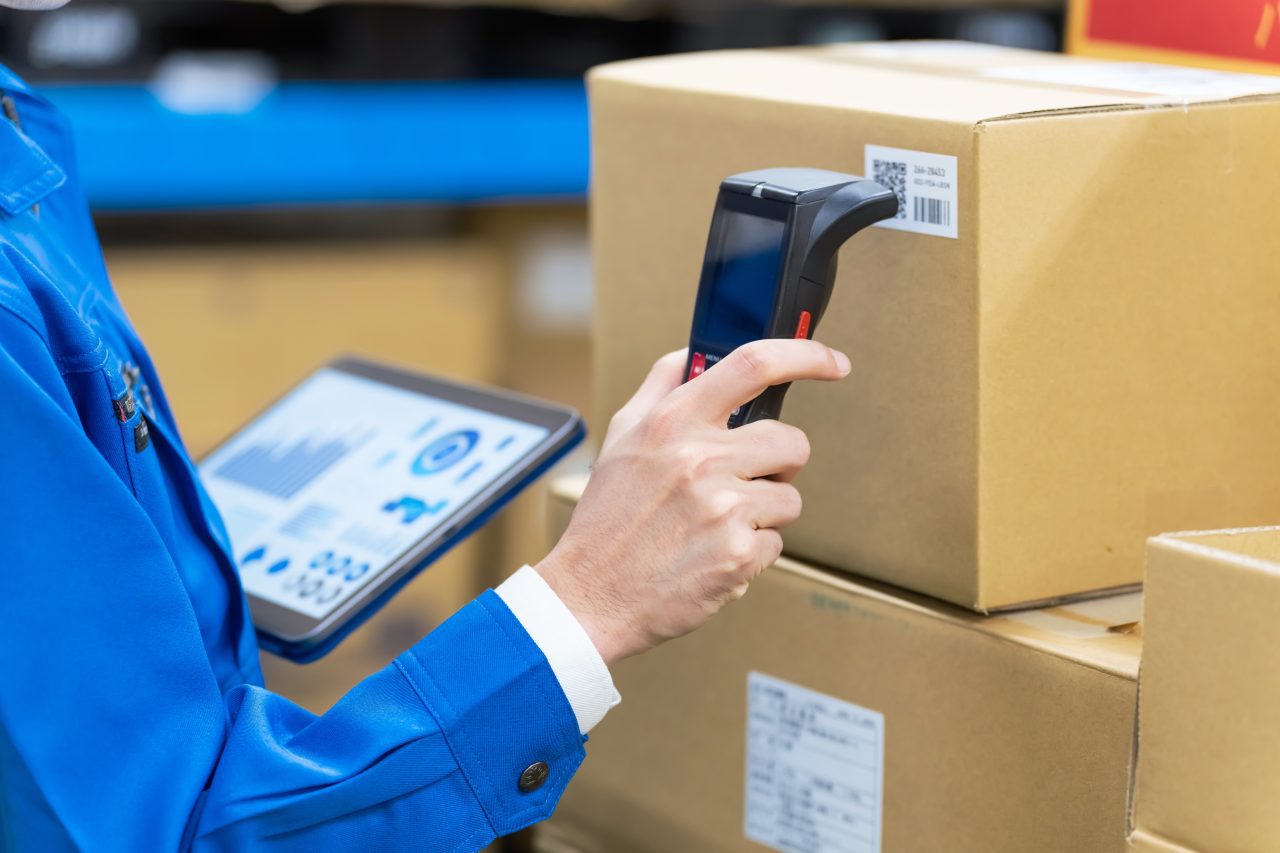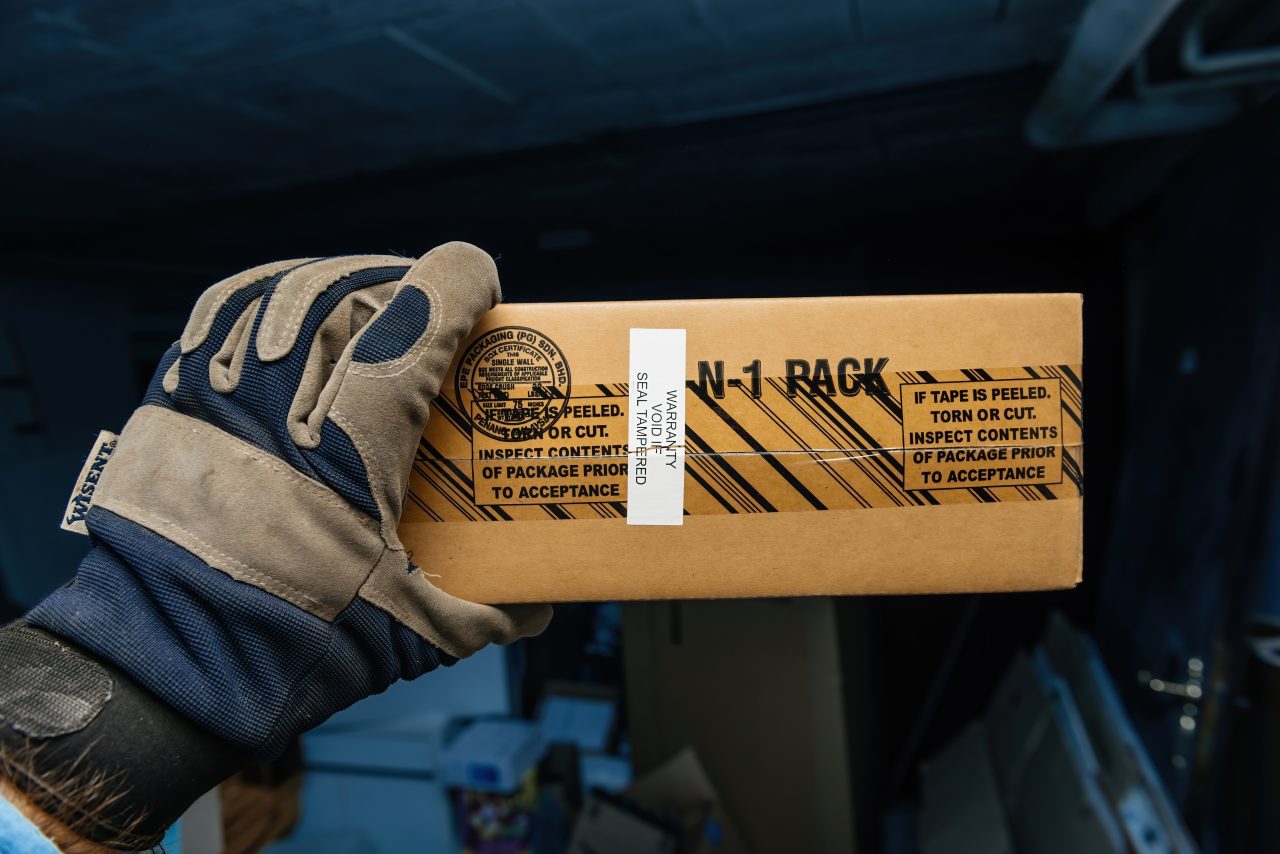Introduction
In the bustling world of asset management, we cannot overstate the importance of asset labelling. It’s the unsung hero, the silent sentinel overseeing efficient operations and streamlined processes. But what is asset labelling, and why should we care?
In this article, we’ll look at the various layers of this critical process. We’ll explore its significance in the broader context of asset management and how it can transform the way businesses operate.
Understanding Asset Labelling
The Basics of Asset Labelling
Asset labelling means attaching an identification tag or label to an organisational asset. Such labels can be simple tags, barcodes or QR codes containing information about the asset. Or they can be complicated large format labels containing huge amounts of information.
Essentially, asset labelling gives firms a way of tracking and managing their physical and digital assets.
It could be stock or production items, or it can be the tools and machinery a business utilises.
Examples of assets that often require labels could include anything from boxes of goods produced to computers, software, manufacturing equipment, and vehicles. And assets aren’t limited to tangible ones, asset labels are also applied to resources such as software licences, domains, and even relevant certifications.
On the tracking side, technologies may be needed to read the asset labels. Organisations need barcode scanners and QR code readers. The asset label process gives firms better insight into the asset’s life cycle, usage, placement and maintenance needs, enhancing operational efficiency.

Importance in Asset Management
An integral part of asset management, asset labelling bolsters the accuracy and efficiency of tracking and inventory procedures. These have multiple benefits and can really impact a business’s bottom line.
Asset labels give a quick snapshot of important asset information like purchase dates, warranty expirations and routine maintenance schedules – perhaps expediting decision-making.
Moreover, efficient asset labelling reduces asset loss and theft, saving organisations substantial monetary resources. A quick scan of the asset’s label can reveal its entire history, enabling faster detection of irregularities or misuse.
Lastly, it eases regulatory compliance by maintaining a comprehensive record of assets. For example, labels on IT assets can help manage software licences and avoid legal implications under copyright law.
These compelling benefits make asset labelling an indispensable facet of modern asset management. So, organisations seeking improved asset tracking, cost reductions, and enhanced regulatory compliance shouldn’t overlook its potential.
Types of Asset Labels
Moving beyond the initial explanation of asset labelling, let’s delve deeper into the specific types of asset labels extensively utilised in asset management. Elevated understanding of these labels can powerfully impact businesses, helping in further enhancing operational efficiency, cost reduction, and regulatory compliance.

Barcode Labels
Barcode labels, the most commonly used type, uniquely signify each asset. They contain a series of parallel lines, each differing in width and space. Scanning these lines, asset managers attain a wealth of information like asset details, location, and more—an essential tool for tracking and inventory management. Their simplicity, cost-effectiveness, and compatibility with numerous devices make them an asset manager’s first choice. For a comprehensive look at the many forms of barcode labels and their usage, GS1, an international non-profit association, offers an excellent resource.

RFID Tags
Radio Frequency Identification (RFID) tags exploit radio waves to track and identify assets. Unlike barcodes, RFID tags don’t require a direct line of sight to be read, enhancing their tracking ability. These tags come in two variants: active and passive. Active RFID tags, integrated with a battery, transmit signals autonomously, whereas passive tags require a reader’s radio wave signals to report asset information. RFID tags find wide applications in various sectors, from retail to healthcare. RFID Journal provides an in-depth appreciation of these labels.Radio Frequency Identification (RFID) tags exploit radio waves to track and identify assets. Unlike barcodes, RFID tags don’t require a direct line of sight to be read, enhancing their tracking ability. These tags come in two variants: active and passive. Active RFID tags, integrated with a battery, transmit signals autonomously, whereas passive tags require a reader’s radio wave signals to report asset information. RFID tags find wide applications in various sectors, from retail to healthcare. RFID Journal provides an in-depth appreciation of these labels.

Tamper-Evident Labels
Tamper-evident labels play a critical role in maintaining the security and integrity of assets. The primary function of these labels is to exhibit visible signs of tampering. If an unauthorised person manipulates the asset, it becomes immediately evident, acting as a deterrent to theft or misuse. They are often used to seal sensitive equipment, safeguard data, and assure product and package integrity. Understanding different types of tamper-evident labels and their usage in diverse contexts can be enlightening, and Label and Narrow Web offers insightful information on this topic.
The precise application of these asset labels entirely depends on the organisation’s specific needs, asset types, and management practices. By leveraging these labels and combining them with robust asset management systems, businesses can maintain accuracy in asset tracking, perform efficient inventory control, and ensure compliance with regulatory standards. Diving deeper, and matching your understanding with the right type of label for your assets can bring unprecedented efficiency and effectiveness in managing your organisational assets.
The Asset Labelling Process
Delving deeper into the practical aspects of asset labelling, we will focus on the process which includes designing effective labels, their placement, and application, and routine maintenance and updates.

Designing Effective Labels
We begin our asset labelling process by designing effective and utilitarian labels. The label design process revolves around the goal of collating essential information about an asset, such as unique identifiers, location data, and status info, into a readable format. Whether it’s designing labels embedded with barcodes, QR codes, or RFID chips, the objective remains the same – to facilitate swift and accurate asset tracking. At Anglia Labels we are here to guide you through the often complex process of designing and producing the correct label. Speak to one of our specialists for all the help you need.

Placement and Application
Next comes the step of positioning and applying these labels. Selecting the correct placement for the labels is of paramount importance. Accuracy is key here as improper placement might interfere with the scanning equipment, resulting in subpar tracking accuracy. Volume and surface type affect how labels should be applied, with certain swelling surfaces and vibrating in machinery, requiring more durable and adherent label materials.

Maintenance and Updates
Maintenance and timely updates form the ultimate cog in the asset labelling machine. Regular checking and replacing of labels, if worn or damaged, are crucial tasks. Any changes in asset information necessitate amending the labels. In a sense, it’s like pruning a tree; continuous care ensures its health and productivity. The cycle of designing, placing, and maintaining labels should be relentless in pursuit of precise asset tracking.
Industry Standards and Compliance
In the realm of asset labelling, adhering to industry standards and regulatory compliance isn’t just advisable; it’s imperative. Standards set by organisations like ISO and legal mandates around asset tracking underscore the importance of compliance in not only ensuring operational efficiency and accuracy but also avoiding potential legal consequences.
ISO Standards for Asset Labelling
The International Organisation for Standardisation (ISO) establishes best practices in a wide array of domains, including asset labelling. The ISO/IEC 16388:2023 standard details the specifications for encoding data in symbologies such as barcodes and QR codes. As per these established practices, each asset should be identifiable, and its data should be interpretable. Businesses can benefit enormously by adhering to these ISO standards in all stages – from designing and applying asset labels to scanning and interpreting the embedded data.
Legal Requirements for Asset Tracking
Legal requirements connected to asset tracking provide an additional layer of assurance. Governments around the globe have begun implementing regulations pertaining to asset tracking with a focus on safety and accuracy. In the UK, the Data Protection Act 2018 safeguards personal data that might be contained in an organisation’s assets. If an asset can store personal data—such as laptops or mobile devices—companies must ensure they comply with legislation to protect this data. Non-compliance could lead to harsh penalties. Therefore, effective asset labelling produces several positive effects, including improved tracking accuracy, inventory procedures, informed decision-making, and legal compliance.
By implementing ISO standards for asset labelling and abiding by legal requirements for asset tracking, businesses maintain operational efficiency while avoiding legal ramifications. Adherence to these guidelines emerges as a crucial aspect of successful asset management. We firmly believe that asset labelling is a significant cog in the intricate machinery of industry standards and legal compliance.
Technological Advances in Asset Labelling
In the wake of expanding technological potentials, asset labelling’s landscape has encountered significant advancements, particularly via innovations in label materials and tracking technologies. These revisions hinge chiefly on ameliorating the contribution of asset labelling to operational efficiency, precise tracking, and legal conformity.
Innovations in Label Materials
Staying abreast of technological innovations has bolstered the durability and functionality of label materials. Labels have experienced a shift beyond just paper and plastic — they’re now seen in resilient forms designed for harsh environments. For instance, the advent of labels made from Polyester with gloss lamination heralds superior resistance to weather elements, chemicals, and abrasion.
Anglia Labels offers a huge array of different materials on which labels can be produced.
It is crucial to get the right material for the right purpose. Our team is on hand to help with the complex process of choosing the right material.
This page gives a good intro to the main material options available.
Once you have chosen the right material there are hundreds of options with the available finishes. Again, Anglia Labels’ team is on hand to advise accordingly.
Dovetailing this, labels with features enabling security — tamper-evident or destructible labels — offer an effective shield against unauthorised asset interference. Such labels leave a residual pattern or disintegrate completely when attempts are made to remove them, providing a practical safeguard against asset tampering.
Technological advancements render these labels a potent solution for particular industries like logistics, healthcare and manufacturing.
The Future of Asset Tracking Technologies
As we look at the future of asset-tracking technologies, the horizon is abuzz with state-of-the-art innovations that have the potential to elevate accuracy and efficiency to unprecedented levels. Leading the vanguard is RFID technology. Transcending far beyond their barcode predecessors in terms of data storage, RFID tags are privy to real-time tracking, therefore accelerating asset management processes.Adding to this, the emergence of IoT-enabled asset tracking has ushered in a new era where assets materialise as a network of interconnected objects. With IoT, real-time monitoring is no longer a herculean task but a reality intertwined within operations, bolstering tracking accuracy and facilitating end-to-end visibility.
Asset Labelling Best Practices
Selecting the Right Labels for Your Assets
Choosing the most suitable label for your assets involves several factors you can consider. Firstly, evaluate the environment where the assets will be located. For items stored indoors in steady temperatures, modest paper labels might be adequate. Conversely, for external assets or those exposed to rigorous conditions, a more durable label such as polyester based with gloss lamination that we previously mentioned would be ideal.
Secondly, consider the size of the assets. Smaller or oddly shaped assets may call for custom-sized labels. However, you should also consider the readability of the information on the label. For instance, barcodes and RFID tags must be easily readable by tracking devices.
In addition, consider the security features you’d want in your assets’ labels. As we discussed earlier, tamper-evident labels offer an added layer of protection against unauthorised handling or altering of assets.
Lastly, align your label of choice with the relevant industry standards such as ISO for interpretable data and legal requirements like the Data Protection Act 2018 in the UK.
Implementing a Labelling System
Once you’ve selected the right labels for your assets, the next step is to implement a labelling system that works best for your organisation.
Firstly, designate individuals or a team responsible for labelling and maintaining the system. This helps ensure accountability and consistency.
Secondly, a digital asset tracking system should be incorporated where possible. As stated earlier, tracking technologies like RFID and IoT-enabled tracking systems can streamline the asset monitoring and data analysis process, adding intelligence to your asset management strategy.
Thirdly, maintain a database or register of your assets, complete with their label identifiers. This allows for easy retrieval of assets and aids in asset auditing.
Fourthly, adhere to compliance regulations. This not only includes the Data Protection Act 2018 but also other regulations relevant to your specific industry.
By correctly selecting and implementing your labelling system, your organisation is then positioned to advance towards improved accuracy, operational efficiency, and regulatory compliance in asset management.
Conclusion
We’ve taken a deep dive into the world of asset labelling, but it’s clear that it’s not just about slapping on a sticker. It’s a vital part of asset management, ensuring efficiency and compliance. From barcode labels to RFID tags, there’s a solution for every asset. But it’s not just about the label itself; it’s about the system behind it. By adhering to standards like ISO and laws like the Data Protection Act 2018, we’re not only staying compliant but also ensuring our assets are tracked effectively. With the right label, a robust system, and a commitment to best practices, we can make asset labelling work for our businesses, enhancing our operations and keeping us on the right side of the law. For virtually every business, it’s clear that asset labelling is no longer something that can be easily overlooked.
Frequently Asked Questions
- Asset labelling contributes to operational efficiency and regulatory compliance in asset management. It utilises various labels, such as barcodes and RFID tags, to allow for streamlined tracking and identification of company assets.

